
센터소개

Tissue Sparing Robot TKA
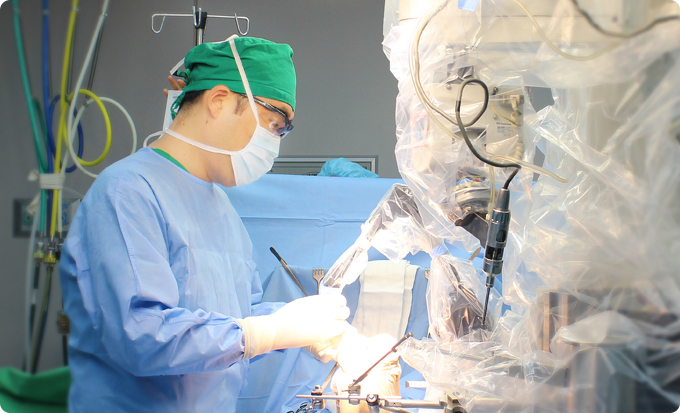
The procedure is performed through an incision from 8-11cm in length depending on patient size and the degree of deformity. The incision is usually directly on the front of the knee and occasionally just to the inside of the patella (kneecap). Our new robotic technology does not require the patella to be averted but just displaced which does not violate surrounding soft tissue structure that definitely aid in the rapid return to a normal functioning knee. This is only possible with the aid of a semi autonomous robotic technique developed in our very own research center.
Conventionally a surgeon has to clear up real estate to attach cutting guides onto the bony surface to effectively cut the diseased bone away, we have simplified this procedure with a surgical robotic arm that is used to implement the presurgical plan through slightly larger than keyhole accesses, in other words we do not have to clear real estate for alignment tools, therefore making this new technique the least invasive procedure in the world today.
Our Direct Tunneling Technology involves a specially designed ( patented ) high speed temperature regulated milling cutter actively attached to the end effector of a closed loop surgical robotic arm. This arm was initially developed at the IBM research center and won the Smithsoniam Award for safety in the Medical Device Category.
We at LCT Research Center develop new applications to improved surgical outcome by removing surgical success outliers, reducing surgical time and improving the overall execution of the Knee procedure.
| General Robot TKA | New Procedure Robot TKA | |
|---|---|---|
| Incision | 16~20cm | 8~11cm |
| Operation | 1hr 45min | 75mrn |
| Pain | Almost painless 20% | Almost painless 97% |
| First Walking Day | 3Days | 1Day |
Past and Present : Comparison conventional Robot surgery with New MIS TKA
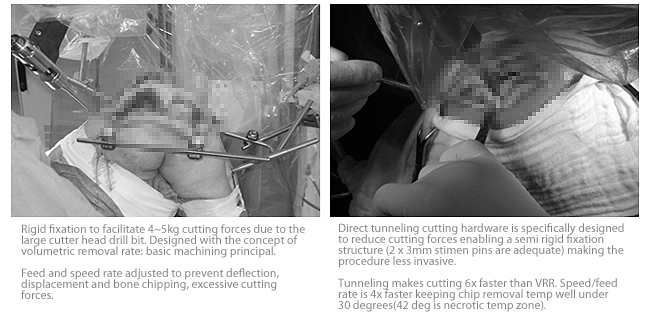
Tissue Sparing Robot UKA
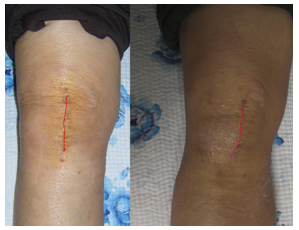 |
UKA’s are more technically demanding then TKA. Therefore, Conventional UKA is apt to increasing outliers. However, newly developed Tissue Sparing Robot UKA has promoted to increase the success rate. The current technique is often performed with an incision of approximately 6 cm in length. The patella (knee-cap) does not need to be turned outward as is the case for total knee replacements. |
None to slight bruising seen promoting early ambulation and improved patient comfort immediately postoperatively. Reduced wound complications are seem associated with conventional MIS procedures where significant bruising and skin abrasion is apparent.
We have developed the worlds first semi autonomous robotic applications for this procedure and have excellent results.
Our approach is tissue conserving thus allowing a relatively limited cutting of the quadriceps muscles and an earlier functional recovery.
The patient usually remains in the hospital for one to two days and starts physical therapy on the first postoperative day.
There is a very high degree of patient satisfaction with robotic tissue sparing unicompartmental knee replacement. In fact, patients who have had a partial knee replacement on one side and a total knee replacement usually prefer the partial knee replacement.
A number of medical reports have achieved an implant survival of greater than 95% at 10 years of follow-up, we believe that our new technology developed here at our very own research center will extend beyond published results conventionally.
We have developed the worlds first semi autonomous robotic applications for this procedure and have excellent results.
Our approach is tissue conserving thus allowing a relatively limited cutting of the quadriceps muscles and an earlier functional recovery.
The patient usually remains in the hospital for one to two days and starts physical therapy on the first postoperative day.
There is a very high degree of patient satisfaction with robotic tissue sparing unicompartmental knee replacement. In fact, patients who have had a partial knee replacement on one side and a total knee replacement usually prefer the partial knee replacement.
A number of medical reports have achieved an implant survival of greater than 95% at 10 years of follow-up, we believe that our new technology developed here at our very own research center will extend beyond published results conventionally.

Knee Resurfacing (Reoperation)
Definitions
If the knee koint pain starts again years after the artificial joint surgery, and if the pain gets more serious to the point that it is hard to walk, the patient needs a revision surgery after consulting with the doctor.
If the knee koint pain starts again years after the artificial joint surgery, and if the pain gets more serious to the point that it is hard to walk, the patient needs a revision surgery after consulting with the doctor.
Relevant Patients
- When artificial joints become loose
- When there is severe tear and wear of joint surface at the artificial joints
- In case of artificial component marginal bone melts away by the metal fragment particles of the artificial joints.
- If an infection breaks out or the pain persists due to purulent inflammation
- When artificial joints become loose
- When there is severe tear and wear of joint surface at the artificial joints
- In case of artificial component marginal bone melts away by the metal fragment particles of the artificial joints.
- If an infection breaks out or the pain persists due to purulent inflammation
Can the second artificial joints be used as much as the first one?
Just like the first operation the revision will ease the knee pain, the patient will be able to walk normal, and the life of the artificial joints can be as long as the first one.
In order for all these to happen it is important to go under sugery before the bones around the artificial joint get too much destroyed.
Just like the first operation the revision will ease the knee pain, the patient will be able to walk normal, and the life of the artificial joints can be as long as the first one.
In order for all these to happen it is important to go under sugery before the bones around the artificial joint get too much destroyed.
How long is the hospitalization and recovery?
There is no big difference. It is like the first ope ration.
There is no big difference. It is like the first ope ration.
| Knee Resurfacing (Reoperation) | |
|---|---|
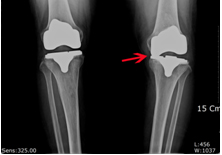 |
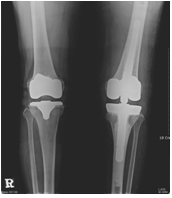 |


















